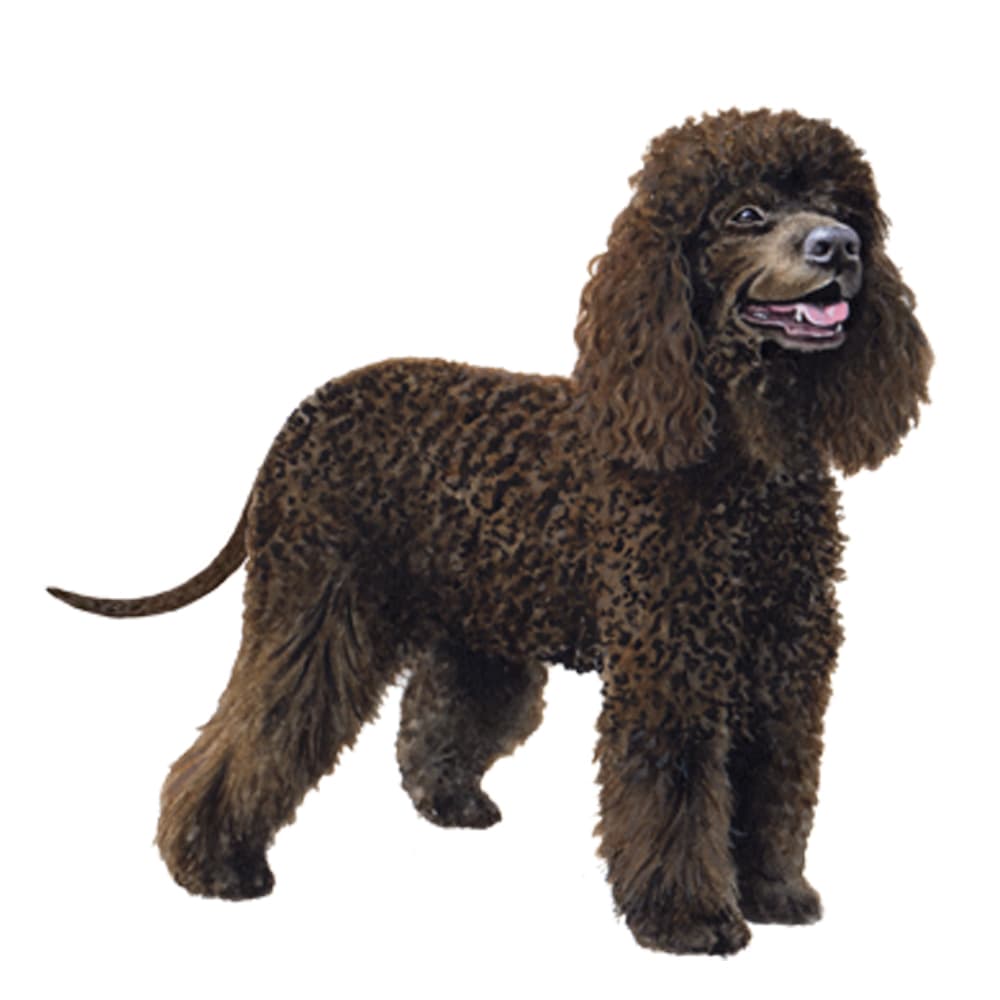Discover your dog's connection to this breed and 200+ others


Discover your dog's connection to this breed and 200+ others



The Irish Water Spaniel is one of the oldest spaniel breeds, originating in Ireland in the 1830s. Its ancestors likely include the now-extinct Southern and Northern Water Spaniels, along with the Poodle and Irish Setter. The breed was developed for water retrieval, particularly in marshes and lakes, making them excellent water dogs and retrievers. The Irish Water Spaniel has a unique curly, water-resistant, and dense double coat. The coat consists of tight ringlets on the body, except for the face and tail, which have smooth, shorter hair. The coat is typically liver-colored (a rich reddish-brown), and it doesn't shed much, making it somewhat hypoallergenic.
Irish Water Spaniels can suffer from Factor VII deficiency, degenerative myelopathy, and progressive rod-cone degeneration. They may have adverse reactions to sulfa antibiotics and to ivermectin. As for all breeds, genetic screening for hereditary conditions is recommended to assist veterinarians with diagnosis and proactive care, as well as help breeders identify affected and carrier dogs.
Irish Water Spaniels are intelligent, affectionate, and energetic dogs. They are known for their strong hunting instincts and remarkable swimming abilities. They are loyal to their families and can be excellent with children. Early socialization and training are crucial to ensure they grow up to be well-adjusted and obedient pets. This breed thrives in an active environment where they can get plenty of mental and physical stimulation.
A canine genetic lineage is a group of individuals or entire breeds that descended from common ancestors predating modern breed formation. Often these lineages are associated with a ‘type’ of dog with a unique historical working role and associated behaviors (e.g., herding, scent hunting, etc.).
The Pointer-Spaniel lineage encompasses both pointer and spaniel breeds. They were both bred for their specialized hunting abilities in Europe. Pointers locate game and freeze in a stance, called “pointing”, to indicate to their hunter that birds are close by. Spaniels were bred to find game in underbrush and retrieve it. Both pointer and spaniel breeds were bred to enhance their strong senses, trainability, and endurance as these are advantageous in a hunting partner. Spaniels and pointers are known for their strong work ethic, ability to work closely with humans and agility. These dogs’ ability to work closely with their hunters makes them an asset during a hunt because they follow direction well and know how their hunters want them to proceed.
Example breeds with ancestry from this lineage include English Cocker Spaniel, Irish Red Setter, and German Shorthaired Pointer.
The Irish Water Spaniel is sometimes called the "IWS" for short. In the late 11th century, the breed was known as Shannon Spaniel, Rat Tail Spaniel, or Whip Tail Spaniel.
It's believed that the Irish Water Spaniel was a favorite of Irish nobility and sportsmen during the 1800s.
This breed's unique coat and appearance make it stand out among other spaniels and sporting breeds.
The Irish Water Spaniel was used extensively for hunting and retrieving game from water, earning it the nickname "Water Dog."
https://www.akc.org/dog-breeds/irish-water-spaniel/
https://vgl.ucdavis.edu/breed/irish-water-spaniel?page=0
https://www.fci.be/en/nomenclature/IRISH-WATER-SPANIEL-124.html
https://www.hillspet.com/dog-care/dog-breeds/irish-water-spaniel
https://www.ukcdogs.com/irish-water-spaniel
Recommended by top vets with decades of experience
21 breeds
64 genetic health markers
50 genetic trait markers
